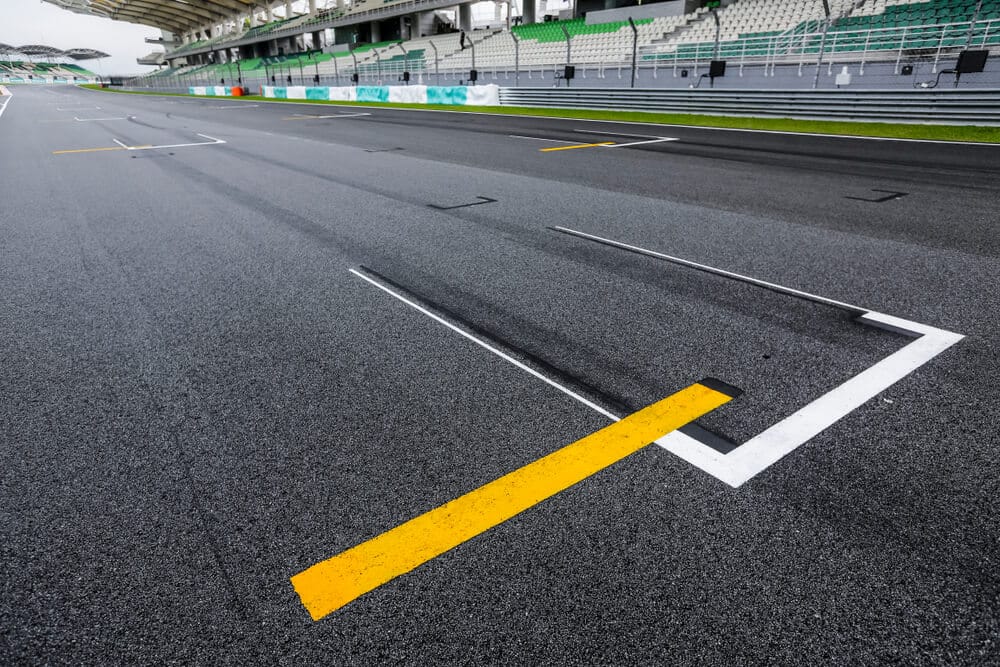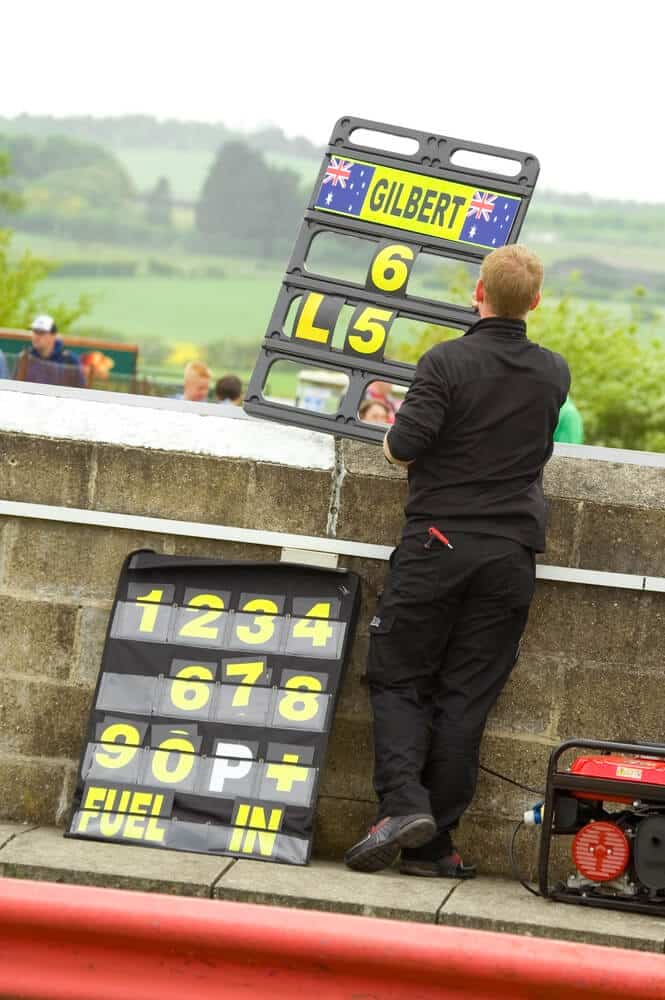The grid is the starting formation in Formula One Racing. It is the arrangement of cars on the starting line at the beginning of a race. The starting grid determines the starting position of each car based on its performance in the preceding qualifying rounds.
Table of Contents
Watch this video to learn more about grid penalties in F1.
What does Grid Formation mean in Formula 1?
In Formula One Racing, the grid is formed based on the results of three practice sessions and a qualifying round. The fastest lap times from these sessions determine the starting positions of the cars on the grid. The driver with the fastest lap time starts from the pole position, followed by the second-fastest driver in second place and so on.
The practice sessions are held on friday (two days before the race). It gives the drivers the opportunity to familiarize themselves with the track and make any necessary adjustments to their car. The qualifying rounds take place on Saturday (one day before the race) and determine the starting grid.
Qualification
- Q1: The first qualifying session, where all the drivers compete to set the fastest lap time. The five slowest drivers are eliminated, and the rest move on to Q2.
- Q2: Is the second qualifying session, where the remaining drivers compete to set their fastest lap time. The five slowest drivers are eliminated, and the rest move on to Q3.
- Q3: Final qualifying session, where the top ten drivers compete for the pole position (the first starting position on the grid). The driver with the fastest lap time in Q3 starts the race from the pole position, followed by the second-fastest driver in second place, and so on.
Key takeaways
- The grid is the starting formation for each race in Formula One Racing.
- The starting positions on the grid are determined by the results of the qualifying rounds.
- The driver with the fastest lap time in the final qualifying session starts from the pole position.
- The starting grid determines the initial positions of the cars, which can have a significant impact on the outcome of the race.
- The grid formation process is an essential aspect of Formula One Racing and involves multiple stages, including practice sessions and qualifying rounds.
- The results of the qualifying sessions can be affected by various factors, such as weather conditions, technical issues, and driving mistakes.
Grid Penalties
Grid penalties in Formula One Racing are sanctions imposed on drivers or teams for breaches of regulations. These penalties can range from a change in starting position on the grid to additional time penalties during the race. The regulations governing Formula One Racing are extensive and cover a wide range of aspects of the sport. Everything from technical regulations to driving standards are covered.
The penalties are applied by the stewards of the race, who are responsible for overseeing the regulations and making decisions on any breaches. The stewards can impose penalties for various reasons, including technical violations, driving infractions, and unsafe behavior. Penalties can be decided after each session, including practice, qualifying and the race itself.
Common causes of grid penalties
One of the most common causes of grid penalties is technical violations. It can be things such as using illegal parts or breaking the engine change regulations. Drivers can also incur penalties for driving infractions. For example: exceeding the speed limit in the pit lane or causing collisions on the track. Additionally, unsafe behavior, such as ignoring yellow flags or impeding other drivers during qualifying, can also result in penalties.
A grid penalty can have a significant impact on a driver’s starting position, making it much harder for them to secure a good finish in the race. In some cases, grid penalties can also result in a loss of championship points, making them an important aspect of the sport to be aware of.
The Impact of the Grid on Race Strategy
The grid position is a critical factor in determining a team’s and driver’s race strategy. Starting from a higher position on the grid offers advantages such as clear track ahead. It’s also less likelihood of early race incidents, and easier overtaking opportunities. Conversely, starting from a lower position can make it harder to make up ground and increase the risk of getting caught up in incidents.
As a result, teams and drivers must consider their grid position when formulating their race strategy. This can include making tactical decisions such as starting on a different tire compound, conserving fuel, or making an early pit stop. Teams and drivers must also take into account the conditions of the track and the weather. These are two things which can have a significant impact on the race and the strategies employed.
The role of the grid in determining the outcome of the race
The grid plays a crucial role in determining the outcome of a Formula One race. Starting from a higher position on the grid provides drivers with an advantage and can increase their chances of securing a good result. However, the grid is not the only factor that determines the outcome of the race, and drivers can still make up ground from a lower starting position.

Grid Walk
The grid walk is a pre-race tradition in Formula One Racing, taking place just before the start of the race. It involves the drivers and their teams walking down the grid to their cars, accompanied by teams of photographers and fans. The grid walk provides an opportunity for fans to get close to the drivers and see the cars up close. This is an important part of the build-up to the race.
The significance of the grid walk lies in the atmosphere and excitement it generates. With thousands of fans and journalists gathered to see the drivers and their cars, the grid walk is a showcase of the speed, power, and glamor of Formula One Racing. It is also a unique opportunity for fans to see the drivers in their race suits, surrounded by the teams and the cars that they will be competing in.
The rituals and traditions of the grid walk
The grid walk is steeped in tradition, with drivers and teams following strict rituals and routines before the start of the race. This can include signing autographs, having photos taken with fans, and performing driver presentations. The grid walk also provides an opportunity for drivers and teams to check the condition of their cars and make final preparations before the start of the race.
Frequently asked questions
How is the grid formed in Formula One Racing
What is a grid penalty in Formula One Racing?
How does the grid affect a team's and driver's race strategy?
Conclusion
In conclusion, the grid in Formula One Racing is a crucial aspect of the sport. It affects the outcome of the race through the starting positions of the drivers and teams. The grid is formed through a combination of practice sessions and qualifying rounds, and grid penalties can be imposed for rule violations. The grid position has a significant impact on a team’s and driver’s race strategy, providing advantages or disadvantages in terms of track position, visibility, and potential for overtaking. Grid walk, a pre-race tradition, adds to the excitement and atmosphere of Formula One Racing by providing fans with an opportunity to get close to the drivers and their cars.
Article sources
Learn more about Formula One
Want to learn more about F1? Then visit our Formula 1 glossary and dictionary.



